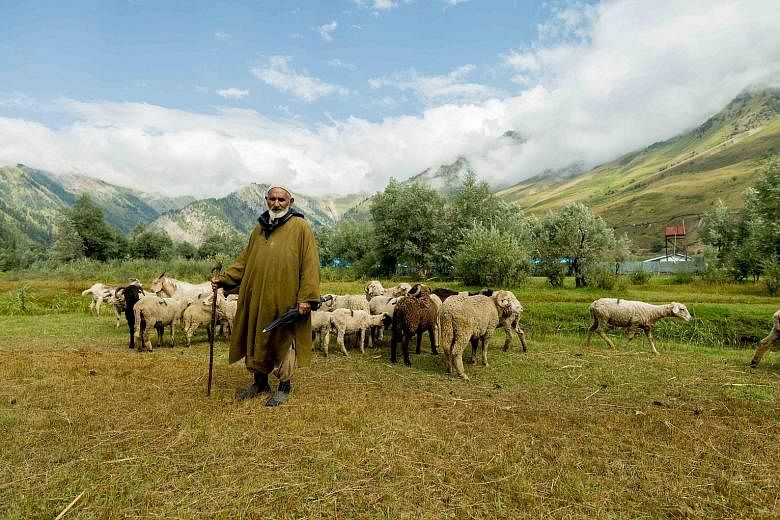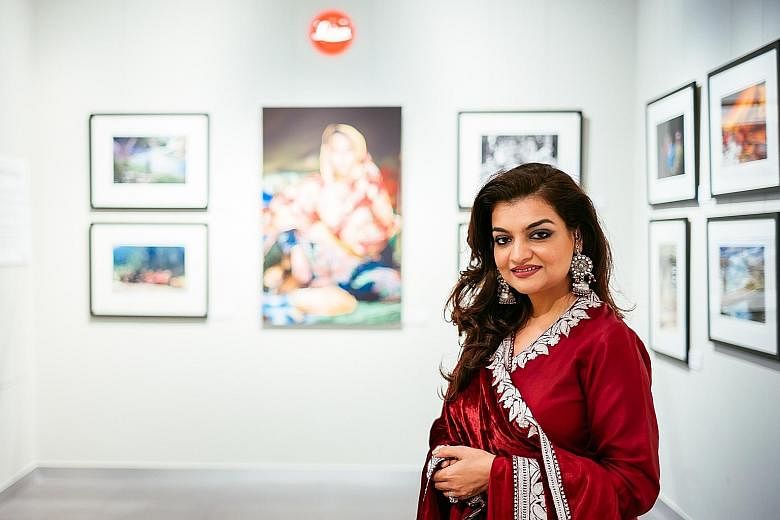Every photograph is an emotion and a story for self-taught professional photographer Laxmi Kaul.
If she had to explain her photography journey in a picture, it will be a portrait of her father, who died when she was 11.
Born in the cultural city of Pune, India, she remembers a beautiful lake near their home. Her father was a hobbyist photographer and loved fishing.
As a child, she used to watch him as he took photographs by the lake. He processed his own film and she fondly recalls the smell of the chemicals in the darkroom. She learnt to love photography when she was eight.
"He was my teacher and when he died, I lost my teacher whom I loved so much," she said. Pained, the self- professed introvert also lost her interest in photography. She used to take pictures, but stopped.
-
VIEW IT /BEYOND BOUNDARIES
-
WHERE: Leica Galerie Singapore, 01-18 Raffles Hotel Arcade, 328 North Bridge Road
WHEN: Till Dec 5, 10am to 8pm daily
ADMISSION: Free
INFO: Call 6336-9555 or e-mail raffles@leica-store.sg
Along the way, she got married in 1997, relocated to Singapore with her husband because of his work, graduated with a degree in arts and psychology and gave birth to a son and daughter, who are now 15 and 13.
The Singapore permanent resident decided to reconnect with photography full-time 14 years ago.
Commercial photography assignments pay for her travels, camera equipment and bills. It also funds her true passion - documentary and people photography.
In 2013, she was in Ladakh photographing the Kalachakra festival and the Dalai Lama when she had free days and ventured out. Driving between Srinagar and Ladakh, she encountered a family of nomads and struck up a conversation with them, and that started her fascination with the people and nomads of Kashmir.
She made multiple trips over the next two years to the border area between India and Pakistan that is home to many militants. It is a turbulent area and everyone has to be accounted for by the Indian army, who has orders to shoot on sight.
There were security checks every few hundred metres. She spent about 10 to 12 days photographing the nomads on each trip.
She recalls an incident when she wanted to cross a river to photograph a stretch of nomadic camps. Out of nowhere, an army personnel appeared and stopped her before she ventured into the melting glacier water. No one was allowed to cross the river, not even the nomads.
Refusing to take no for an answer, she and the driver drove to a village where she sat at the army camp for four hours pleading for permission to cross the river and visit the camps.
On the third day, she met the commanding officer from the main army camp. After conducting background checks and gaining an understanding of her purpose, he agreed to let her cross the river on one condition - she had to take two commandos with her.
In Beyond Boundaries, her first solo exhibition in Singapore, the 31 images show a visual contrast between the lives of the nomads and the conflict-ridden area they are in.
"Kashmir is very beautiful and the people are happy with who they are, despite living in a conflict area. They live for the day. They don't have a fancy life or 24-hour electricity. They are living on the boundary line, but their minds are beyond that... They are contented and happy with the simple things in life," she said.
Working alone in a foreign land, she tries to be as discreet as possible.
She dresses like the locals, covering her head with a scarf. She keeps her cameras - a Leica M-System and S-System - covered sometimes because she does not want unnecessary attention or to endanger anyone. She also relies on the goodwill of friends she meets along the way who offer their help as local guides.
She felt it was easier to establish rapport as a woman photographer. "I was invited into every home and they insisted on feeding me. I think that was because I was a woman and sat with the women there."
Photography is a visual diary for Laxmi and stems from a connection to her late father.
"There are days when I don't come back with great shots, but come back with great feelings. On good days, I have both."



